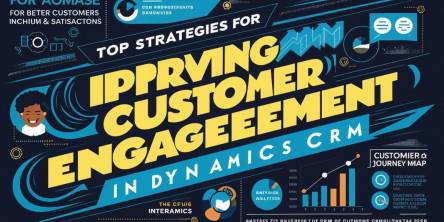Is Outlook disappearing?

All up until the beginning of this decade, when mobile and smartphone technologies were just starting their global dominance, Outlook held first position and amounted for the largest number of email opens. Its market share in 2011 was around 30%, and many of our friends were still using Hotmail with 12% of the share. The rest of the email opens share was distributed in much smaller numbers. iOS devices and Apple Mail were just gaining foothold. Correlating with the share, Outlook email client accounted 37% of total number of email opens, web version some 7% with then still active Hotmail standing at 11%, while the rest of the competition were all beneath 10%. “The rest” being Gmail, Apple Mail, Yahoo Mail, iPhone, Android, and Thunderbird…to name a few. All of them are giants now.
Email is not dead.
So, let’s fast forward to the current situation and 2016. We are reading tons of articles and reports claiming that business communication and collaboration tools in the likes of Trello, Basecamp and perhaps most famous Slack are soon to replace email altogether in the business environment. All the while, reports about millennials and Generation Z habits pretty much point out that Social Media, Facebook, Twitter, Snapchat and instant messaging platforms WhatsApp and Viber have left a trail of ash in recent years. For Generation Z, email is something their parents used for work. Mobile technologies simply seem natural to them, while email is some form of old and sluggish way of communicating. An article on the Wall Street Journal quotes some of the Generation Z members saying that for them “email has become like a Rite of Passage” into the world of grown-ups. How silly are those sayings coming from a generation that was pretty much brought into this world with technology by their cribs. However and despite all of these claims, virtually entire global business relies on email.
Even though the aim of this article is not primarily to negate these claims, let us state for the fact that email is not going anywhere. It will and it must change, moving perhaps entirely from desktop to mobile, becoming more intuitive for those young generations, not giving people that feeling of doing something serious and time-consuming. However, it seems it will remain a prime way of business communication, while its commercial uses are still evident to a large amount of people. Website emailisnotdead.com quotes Radicati Group’s report from 2015 that 4.35 billion email accounts will reach 5.59 billion by 2019. That is growth of more than 26%. In 2016, an impressive $38 returned for every $1 invested in email marketing. With such an incredible ROI, I am wondering if there is a marketer that has not heard that “2017 will be the year of email marketing”? The news may come as a surprise, especially when you know technology that old is constantly under barrage of guesses which tech and how soon will put the last nail to the coffin.
Okay, so what is going on with Outlook?
Outlook has seen many overhauls over the years, but notable editions were 97’ being the first major milestone for Office, 2003 also as part of the Office suite we all remember, 2007 debuting and bringing major changes and features, 2010 and 2013 with important IMAP improvements. Every new edition also came with its new set of problems and issues bothering users. Office 365 first introduced Mac support and 2015 brought about updates for the web version and the client as well as Outlook for Phones and Tablets bringing it to mobile platforms. This last change meant that Microsoft was re-establishing itself as a major Google competitor.
Big business and corporate world likes their traditional, proven enterprise solutions. Major thing they always rely on is support, one of the things that secured Microsoft’s position over many years. Google still has much to learn regarding that or perhaps it will create some innovative and automated approach to support, but until that happens CIO’s rely on it.
While Microsoft was updating Outlook, the giants became exactly that. As mobile proved its dominance over desktop in those last five years, it spiked from just 16% of email opens to 56%. That spike meant that Apple’s unique ecosystem neared 50% of total amount of email opens with iPhone securing 33% of all opens. Desktop still ruled back in 2011 and accounted for over 40% of entire number, but finished 2016 with just 16%, continuing the downward spiral to its lowest ever. For webmail, all of this meant 26% of total amount of email opens. Gmail held 19% in distant second place after Apple iPhone.
Microsoft’s great contender
The corporate world is a tricky bunch, it lacks innovation and loves its established practices. In contrast, we know that smaller businesses and startups are always looking for new, cheaper and more efficient ways and technologies to give them the upper hand.
Built within the primary corporate ecosystem used by nearly every business in the world, Microsoft Outlook has ruled the business world for two decades when it comes to email business software. However, Google turned out to be quite an adversary not only in the commercial usage but also recently in corporate as well.
The landscape has drastically changed in recent years (millennials being an even trickier bunch). Outlook’s market share plunged over those years to some 6% for the client version and 5% for the cloud-based version. Microsoft crunched the numbers for Outlook.com at 400 million active users with some mentions of 4 out of 5 companies on Fortune 500 list using the client version. As previously mentioned, Gmail has finished last year with 19% market share.
According to Gartner’s report from 2016, the trend that we were witnessing last year is a steady adoption of cloud email. Although still in its early stages with 13% of identified publicly listed companies globally using one of the two main cloud email vendors in the likes of Microsoft and Google, companies are slowly realising the benefits of cloud-based email. Out of those 13 percent, Gartner found that 8.5 percent of public companies in the sample use cloud email from Microsoft’s Office 365, while 4.7 use Google for Work. The remaining percentage have local, hybrid, hosted or private cloud email managed by smaller vendors.
Using a large number of publicly available domain routing records of nearly 40,000 public companies, Gartner concluded that Microsoft leads in most industries, particularly traditional, established and regulated ones, while Google is ahead in more competitive ones. One fact stands out in the report. Namely, more than a third of companies in industries like hospitality, professional services and consumer products (those with the highest revenues) use cloud email from one of these two vendors. More competitive industries with less regulation, like travel, media, advertising, software publishing, consumer products and food and beverage.
While Google's popularity stands strong with smaller companies, with 50% share of companies with revenue less than $50 million, Microsoft’s entire ecosystem and software integration, along with its familiarity, remains the primary reason why more than 80 percent of large businesses and industries with revenue over $10 B are sticking to Outlook. For those companies, it also has to do with Microsoft’s enterprise know-how. CIOs simply do not see value in Google’s approach to support, something that Microsoft continues to provide at a consistently high level. Their deeper and prolonged understanding of business needs is the reason why if it comes down to moving to the cloud, a big business still recognizes the more experienced one to solve its problems.
What about the others?
If moving to the cloud is not yet something that home or work users are looking for, but Outlook continues to seem a bit old-fashioned and gives you headaches from time to time, there are numerous client alternatives to check out. All of them support POP and IMAP and provide the basic layers of security. Often enough these solutions are cheaper alternatives, and pricing is always an issue for small businesses and commercial usage in our homes.
eM Client has been around for a while now, and with support for Gmail, iCloud, Outlook.com and Exchange, it has secured its position as one of the longer standing ones. The free version of the software is limited to only two accounts, which is frequently cited as one of the downsides. Interestingly enough, although with over a decade in existence eM does boast a nicely designed interface.
There is of course the old and tested Mozilla Thunderbird, which, just like the famous browser, gives users a lot of freedom with a huge number of add-ons. For users in need of more security, it offers PGP protocols. However, with old and tested still comes that interface that just does not seem like it is keeping up with the pace, and for younger generations aware of many alternatives, it definitely looks a bit outdated.
Also with accent on the security, with encryption and digital signing of your emails, comes Inky - a secure email platform for Enterprise. Available for Windows, Mac, iPhone, iPad and Android its approach is elegant design and device syncing with “military-grade security and protection”. It supports MS Exchange and Office 365, Google Apps and Suite, but after a free trial comes at a subscription price of $5 per user per month.
Mailbird is another client worth mentioning. It has started establishing itself with the new versions of Windows, and rapidly grew even earning awards. Simple design with the possibility to connect to Facebook, WhatsApp, WeChat and Slack is what makes it stand out from the crowd. Additionally a special feature of Mailbird is that it allows developers to create applications for the for the Mailbird’s big open-source app community and platform.
Lastly, Hiri is an email client that has come up recently as one of the newest solutions from an Irish startup trying to fix email in the workplace. Beautiful and simple interface design with two special features make it literally a client for millennial generation. Standing out from the rest of the crowd is the option for recipients to rate each email they receive, giving your emails personal email workplace score and analytics. The second entirely new function is Hiri asking you to separate every mail into two groups: FYI and those that require further action. This simple new thing could actually be the office changer businesses and employees are looking for to declutter, and an important element for those younger generations looking to separate emails with concrete action from those which sometimes prove irrelevant.
Desktop vs Cloud
As people continue to move to mobile clients, two great contenders, Google and Microsoft, will battle it out in the cloud. Businesses with their workplace environment will stick it out some time with the desktop clients providing additional features. However, evidently cloud solutions security will not raise that many questions as before, while those much needed business features will entirely have their cloud counterparts. For now, as we witnessed in 2016, new overhauled Outlook present on all platforms is not going anywhere. For users staying with desktop clients and while looking to decide whether they are sticking with Google’s or Microsoft’s solution or making the switch, opting out for some of the more unconventional options mentioned above might prove to be just what they are looking for as a cure for their headaches.
Similar Articles
Open source software (OSS) is distributed with its source code, which means it can be distributed, modified, and used freely with the original rights. Most users never see the source code, a critical part of the software.
It's one of the keystones, basic but key in the successful highly competitive modern business environment, where the connection with the customer is a must.
The speed of progress in the modern business landscape is quite relentless. For small-scale companies, this implies that keeping up with this progress is not simply gainful but fundamentally significant for their survival. And what does success in such an environment demand?
The finance sector needs to battle many difficulties in the modern and quick-moving digital landscape. Be it exploring the unpredictable snare of official guidelines or overseeing tremendous volumes of data - - financial establishments are feeling the pressure to succeed. This demanding environment, in turn, often leads to exhausted teams, costly manual errors, and inefficiencies that can be chalked up to repetitive tasks
The manufacturing industry, vital to the world economy, is at a pivotal intersection. I mean that, yet again, changes are afoot in the sector, this time driven by digital transformation as it represents a profound change in the very essence of how manufacturers operate, think, and drive innovation.
Technology helps make things easier and faster. Digitization is one of the aspects of technology that has changed how we live and work. It has brought many benefits for businesses, especially the travel industry. Customers can search online for the schemes offered and easily book trips, but payments need to be completed with ease.
In an article published by The Economist in 2017, while describing the astounding growth of titan companies like Google, Apple, Facebook, and Microsoft, it was mentioned how data had become “the oil of the digital era.”
Harnessing the latest technology to create and distribute content is an ongoing process in the media and entertainment industry. Changes in consumer behavior and demands, along with continuous and rapid technological advancements, are reshaping the industry
In the modern, dynamic business environment, companies across the broad spectrum of sectors have become heavily dependent on vehicle fleets to sustain their activities. Whether it involves delivering crucial supplies, ferrying passengers, or supporting field service crews, effective fleet management is a fundamental pillar for success









